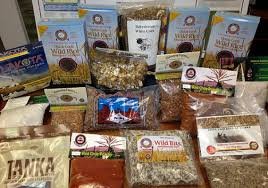With expanding regulations, foodborne illness outbreaks, and product recalls, there is an intensifying demand for food and beverage safety. Production challenges are growing more intense every year; how can you keep up?
The challenge: growing regulations
Manual sampling techniques such as hand scoop and spigot sampling are common methods with food and beverage producers and processors. These convenient and low-cost, direct methods are widely accepted as a standard operating procedure (SOP). Final product sampling is also regarded as being easy and reliable. The product is a random representation of the lot and is already contained and ready for the lab.
However, direct hand sampling and final product sampling can introduce sampling bias. The ’Bacteriological Analytical Manual’ from the US Food and Drug Administration (FDA) regarding food sampling states: “The adequacy and condition of the sample or specimen received for examination are of primary importance. If samples are improperly collected and mishandled or are not representative of the sampled lot, the laboratory results will be meaningless.
The solution: representative sampling
The Grocery Manufacturers Association recommends using the representative sampling processes outlined in the 2003 FDA BAM study to sample nuts for salmonella. The International Commission on Microbiological Specifications for Foods (ICMSF) offers a thorough review of principles and applications for all types of microbiological sampling, which also supports using representative sampling.
This is because representative sampling takes bias out of your sampling system. The more representative your sample is, the more accurate it is – and the easier it is to achieve regulatory compliance.
How representative sampling improves regulatory compliance
- Reliability – Representative automatic sampling is reliable, from validation of raw ingredients to quality testing at each key processing stage. It is the only way to ensure confidence in food testing results.
- Accuracy – For the most dependable ingredient analysis and traceability, automatic representative sampling offers a repeatable method providing a more accurate, efficient way to sample versus scoop/pull methods that are inherently bias.
- Ingredient verification – In-process ingredient blend management systems could be enhanced by automatic sampling to verify that ingredients are being blended at appropriate ratios.
- Product traceability – Tracking and verifying ingredients from farm to final products throughout the supply chain requires a statistically sound sampling plan. A product tracing plan can help automate the documentation of the production and distribution chain of products and allow for the efficient collection of data required by the FSMA.
Automatic sampling makes executing product sampling and tracing plans easier and more efficient with automated and accurate data documentation. An automatic sampling solution can more than pay for its installation by preventing costly recalls and enhancing compliance.

